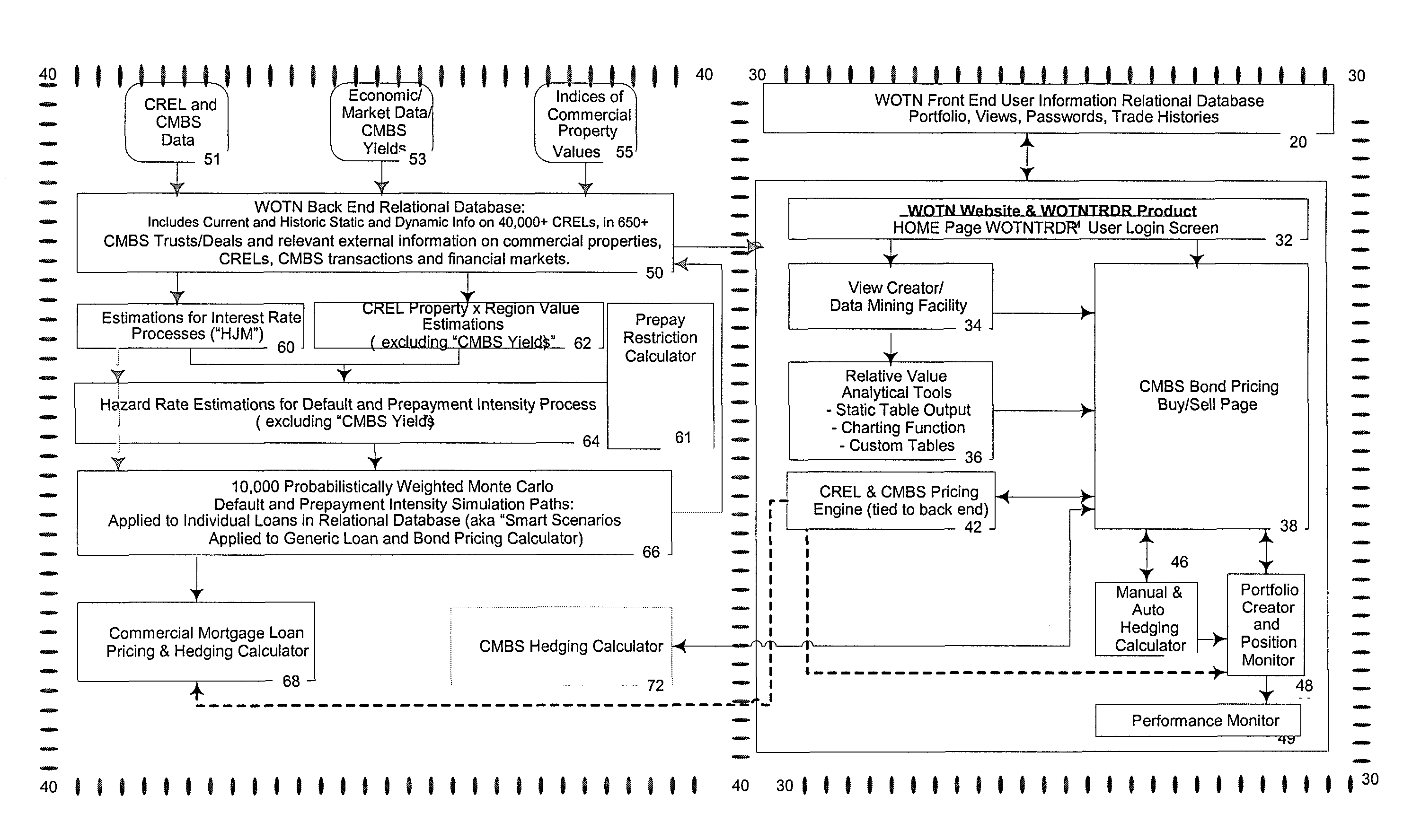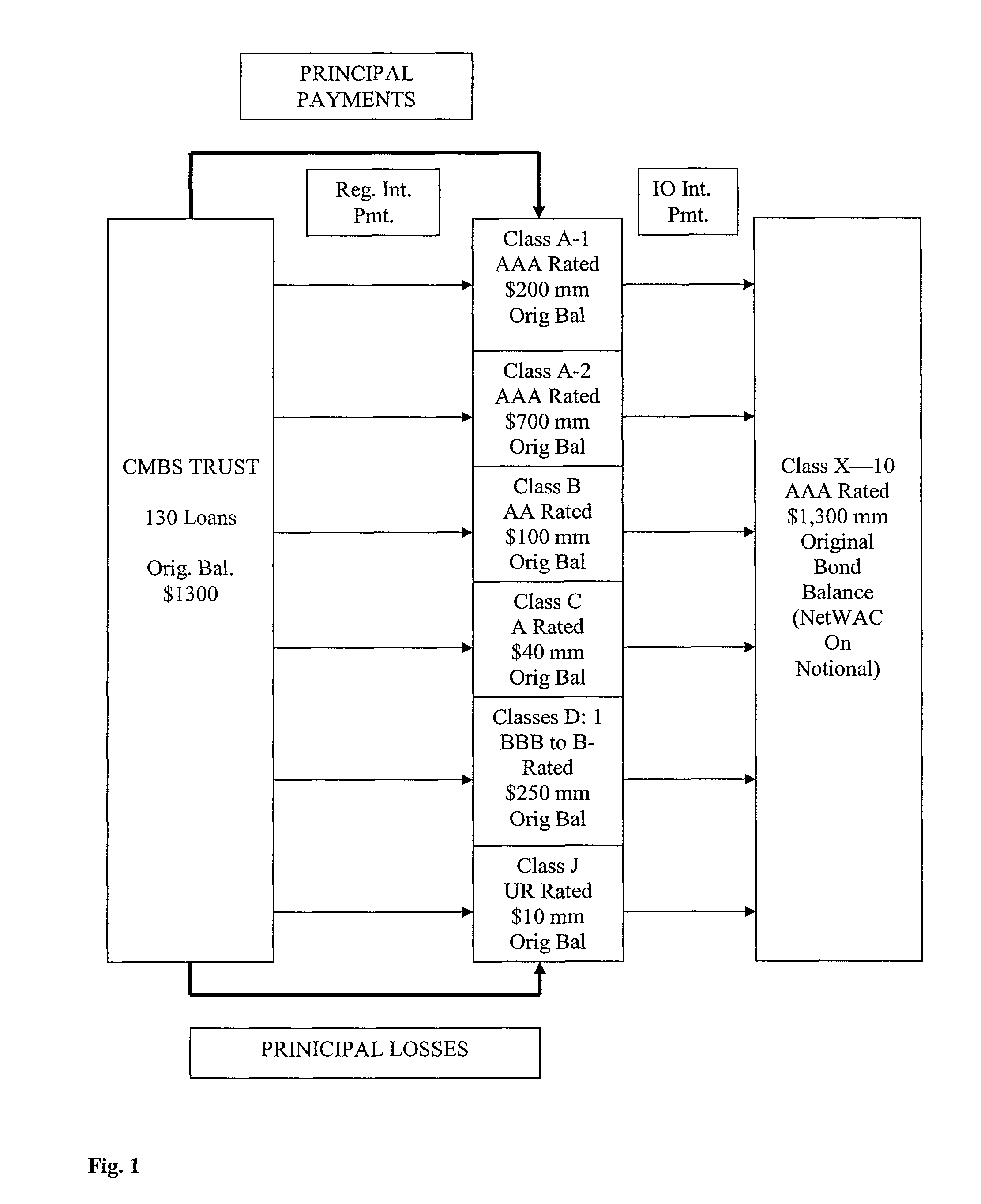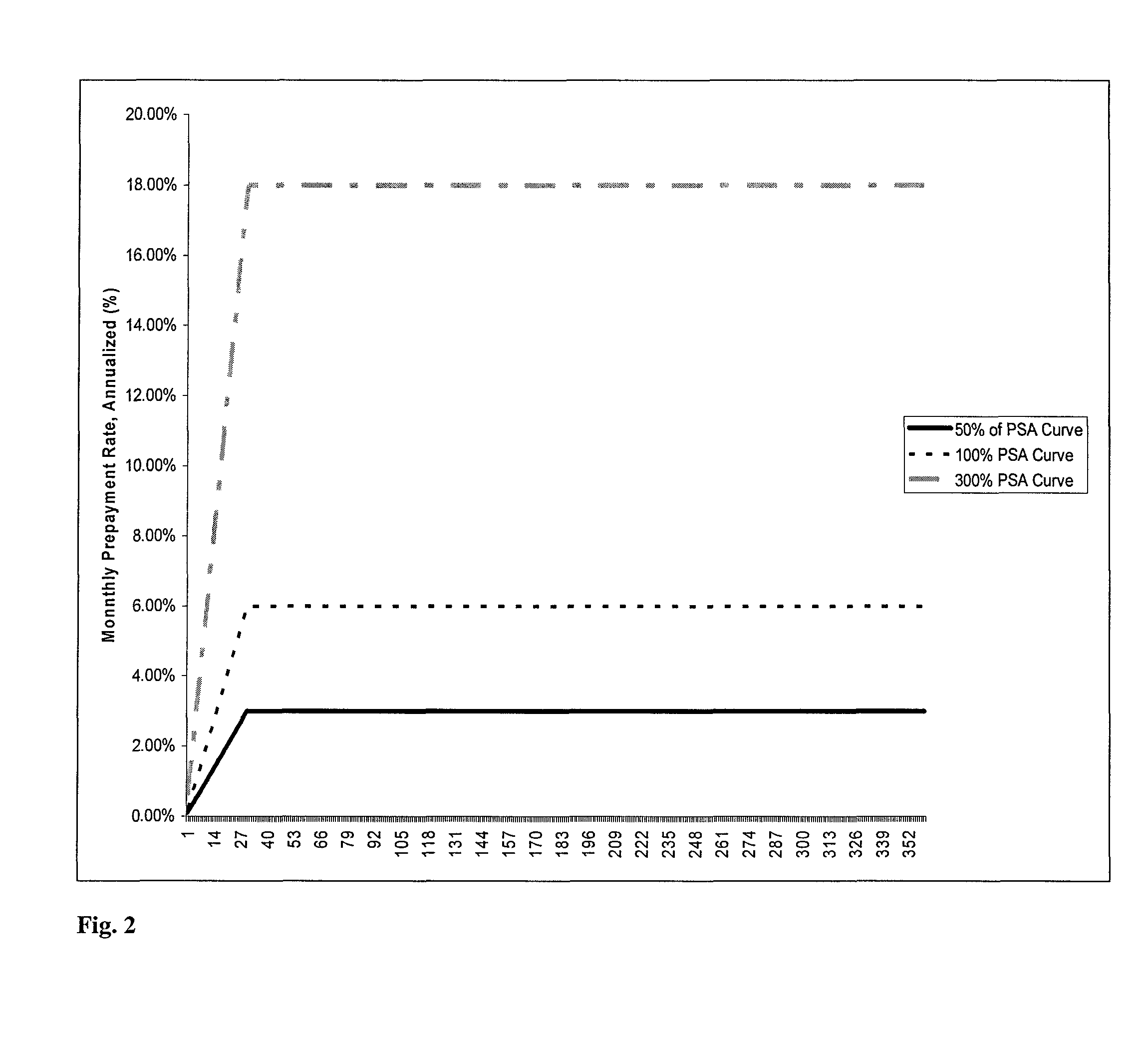Structured finance securities option pricing architecture and process
- Summary
- Abstract
- Description
- Claims
- Application Information
AI Technical Summary
Benefits of technology
Problems solved by technology
Method used
Image
Examples
embodiment 10
[0056]A detailed embodiment of the method of this invention is shown in FIG. 4. FIG. 4 shows a block diagram of an embodiment 10 of the system of this invention. Referring to FIG. 4, a front-end relational database 20 is accessible from a front-end structure 30. The front-end structure 30 includes a graphical user interface (GUI) 32, a view creator component 34, an analytical tools component 36, a bond pricing buy / sell component 38, a pricing component 42, a manual or automatic edging calculator 46, a portfolio creating component 48, and a performance monitor 49. The front-end structure 30 communicates with a back-end structure 40 through interfaces provided by the pricing component 42 and the buy / sell component 38. The back-end structure 40 includes a back-end relational database 50, an interest rate risk calculator 60, a prepayment restriction calculator 61, an estimator 62, a default and prepayment (credit) risk calculator 64, a simulator 66, a loan pricing and hedging calculator...
embodiment 300
[0330]The Structured Finance Product Database of this invention can be implemented with any robust database program. FIG. 32 shows an embodiment 300 of the database and data structures of this invention. Some data structures such as Dynamic Variables, may have more than 200 fields in all, and thus cannot be shown in the diagram, so only a few are shown. A brief description of some of the data objects is given below:[0331]i) struct_fin_source—1_deals: This data object contains a list of names of all deals as given by the Loan Data and Bond Data provider. Additional third-party deal names (such as those provided by third-party vendors) require mapping between these deal names and the primary deal names provided by the primary Loan Data and Bond Data provider. This is done through the tables struct_fin_source—1_deals, wotn_deal_map, and wotn_to_sf1_sf2_map.[0332]ii) good_struct_fin_source—1_deals: If missing data from the primary loan and bond data provider makes it impossible to use t...
embodiment 200
[0349]FIG. 35 shows a schematic block diagram representation of a computer system or server as used in this invention. Referring to FIG. 35, the embodiment 200 of the computer system or server as used in this invention includes one or more processors 210, one or more computer readable media 260 operatively connected to interconnection means 215. It should be noted that the embodiment 200 of the computer system or server as used in this invention can be, but is not limited to, a distributed embodiment and that the one or more computer readable media 260 can be, but are not limited to, several computer readable media at different locations. Similarly, the one or more processors 210 can be, but are not limited to, several processors at different locations. The interconnection means 215 can include, but are not limited to, a computer bus, a wired connection, electromagnetic carrier waves, an optical connection or a combination thereof.
[0350]In one embodiment, the back-end computer 140 i...
PUM
 Login to View More
Login to View More Abstract
Description
Claims
Application Information
 Login to View More
Login to View More - R&D
- Intellectual Property
- Life Sciences
- Materials
- Tech Scout
- Unparalleled Data Quality
- Higher Quality Content
- 60% Fewer Hallucinations
Browse by: Latest US Patents, China's latest patents, Technical Efficacy Thesaurus, Application Domain, Technology Topic, Popular Technical Reports.
© 2025 PatSnap. All rights reserved.Legal|Privacy policy|Modern Slavery Act Transparency Statement|Sitemap|About US| Contact US: help@patsnap.com



